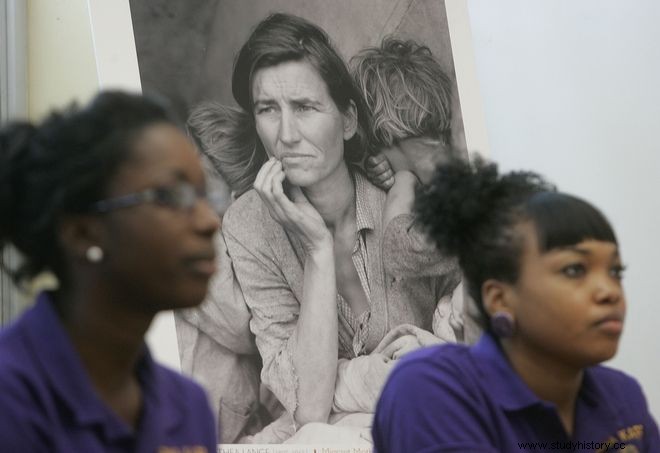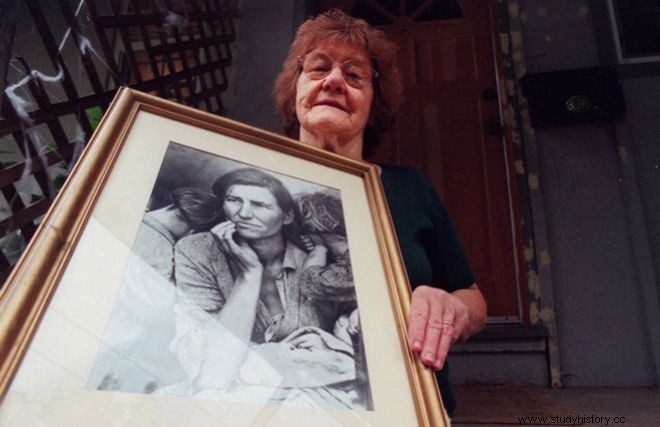"Migrant Mother". Dorothea Lange's historic photograph from 1936 is on Time's list of the 100 most important photographs of all time and symbolizes the eternal and selfless struggle of a mother for her children.
The frame personified in the most dramatic way the consequences of the Great Depression and was taken in Nipomo, north of Los Angeles. Dorothea Lange had decided to leave the celebrity photography of the time and when the Great Depression began she turned her camera to those who were most affected by the crisis.
She was hired by the Farm Security Administration of the US Department of Agriculture to record the documents of the time, with the aim of raising public awareness and with her camera she "caught" the documents of absolute poverty.
Her most famous photograph from her collection at the time was a depiction of Florence Owens Thompson with two of her children.
"I saw the starving and desperate mother in her scene and it just captivated me. I knew this photo was going to be historic," Lange said of her "click".
Lange had passed one of dozens of camps where farm families lived in shacks, wandering homeless and destitute, 3,500 people in all. They were picking peas and peas, but the frost had worsened the situation. The photographer entered the camp and among other things, took a total of five frames of the mother living in the makeshift tent with her ten children. Both were in her arms. He didn't ask her her name, only her age.
She told her that she was 32 years old and never looked at the lens. The photographer said she wouldn't publish the frame, but changed her mind. A day after it ran in The San Francisco News, the camp was filled with food and clothing from dozens of people who were moved by the image and rushed to help.
The mother in question had become the symbol of dignity, sacrifice for her children, and determination to change. Lange became with her work a great influence for hundreds of photographers who were inspired by her "eye".

The picture was first shown at the Museum of Modern Art in 1940, under the title Family Picker, California. In 1966, when the Museum held a retrospective of Lange's work, the photograph acquired its current title, "Migrant Mother, Nipomo, California".
Florence Owens Thompson's identity was revealed decades later in the late 1970s, shortly before her death. The woman was fighting cancer and had no money for treatment. By publishing her name, money was raised to give her a dignified end.
As revealed, she was of Cherokee Indian descent and lived alone with her children after the death of her husband amid persecution and unemployment.

Although the family had managed to buy a house in Modesto, California, Thompson herself decided to continue living in a trailer, which she did for the rest of her life. "We never had much, but she always made sure we had something. Most of the time she wouldn't eat so we could have food, even a little. She was incredibly strong, the backbone of our family," her daughter Katherine McIntosh said in an interview. of CNN in 2008.
Lange's series of photographs along with the "migrant mother" portrait are now in the Library of Congress.
